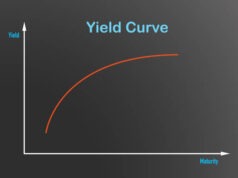
The W-2 form and W-9 form are tax documents that apply to different employee category types. Knowing what tax documents to use is essential for employees who are starting a new job, but HR staff also needs to be aware of this difference to retain legal compliance.
This article will explore the differences between both forms and which one you should use for tax purposes.
How to Generate a W-2 or Other Tax Forms Online
The IRS and most template websites will offer legally compliant fillable tax documents for a reasonable price. On FormsPros business professionals gain access to fillable W-2, W-9, and 1099 NEC templates that make personal tax filing less of a hassle.
Businesses also have the option to send these documents in bulk through email to their employees, where they convert to a PDF document.
What is a W-2 Form?
A W-2 form, also known as the Wage and Tax Statement, is the document employers need to send to each classified employee. Both the employee and employer will send their own copy of a W-2 form to the IRS at the end of the year.
W-2 employees will have a portion of their income taxes deducted by their employer each month to ensure their employee’s taxes are covered.
Who Files a W-2 Form?
An employer is legally required to send out a W-2 form to every employee who is paid an hourly wage, salary, or other forms of compensation. W-2 employees are not considered self-employed or contracted workers who file a separate form (the W-8).
Employers must send their employees a W-2 before January 31st, so they have enough time to file income tax.
Employers will use W-2 forms to report Federal Insurance Contribution Act taxes throughout the year. Before the end of January, employers issue a W-2 and W-3 (for the purpose of totaling up all parts of form W-2) for each employee with the Social Security Administration. These employees will need this form to calculate their Social Security benefits for each month.
What is a W-9 Form?
A W-9 form, or a Request for Taxpayer Identification Number and Certification, is used to get information from vendors who hire independent contractors (or freelancers).
Any business that pays a contractor more than $600 a year has to report these fees to the IRS using a 1099-MISC form. Clients will use the Form W-9 to get the contractor’s name, address, and SSN.
Who Files a W-9 Form?
Businesses that hire independent contractors don’t withhold taxes, Social Security taxes, or Medicare. Instead, contractors are responsible for their own tax obligations and finances.
Still, the IRS will need to know how much these contractors received from their clients, which is why the client will fill out a 1099-MISC for the IRS as proof that money was exchanged.
Once the client fills out the 1099-MISC, they must keep a copy and send it to the IRS at the end of the tax year, but they will not send a W-9 form. The W-9 form was purely for informational purposes. It’s up to the independent contractor to send the W-9 form and all 1099-MISC forms.
How Do I Know If I’m an Employee or Independent Contractor?
Employees who were classified as independent contractors incorrectly will need to report their employer to the IRS immediately. Before doing so, ask yourself the following questions:
- Who controls my behavior at work?
- Employees will be given instruction on when and where they work.
- Employees will not have to purchase services or supplies.
- Employees are given detailed instructions by their employers.
- Employees are measured by how they work, not specifically their results.
- Employees provide on-the-job training and/or further skill training.
- Who controls the financial aspect of your job?
- Employees don’t invest in the business’s equipment.
- Employees don’t have many unreimbursed expenses.
- Employees don’t offer services that are available to the market.
- Employees aren’t affected by a company’s profit or loss.
- Employees are guaranteed a regular wage.
- What’s your relationship with the business?
- Employees have a contract the designates them as an employee
- Employees are confirmed to be employees by the IRS
- Employees receive insurance, a pension plan, and vacation or sick leave.
- Employees are expected to stay with the company indefinitely.
- Employees offer services that are key to its business activity.
If you feel that you have been incorrectly classified, fill out Form 8819 to report your taxes as an employee, then file an Form SS-8. This allows the IRS to open a file on your employer.


































